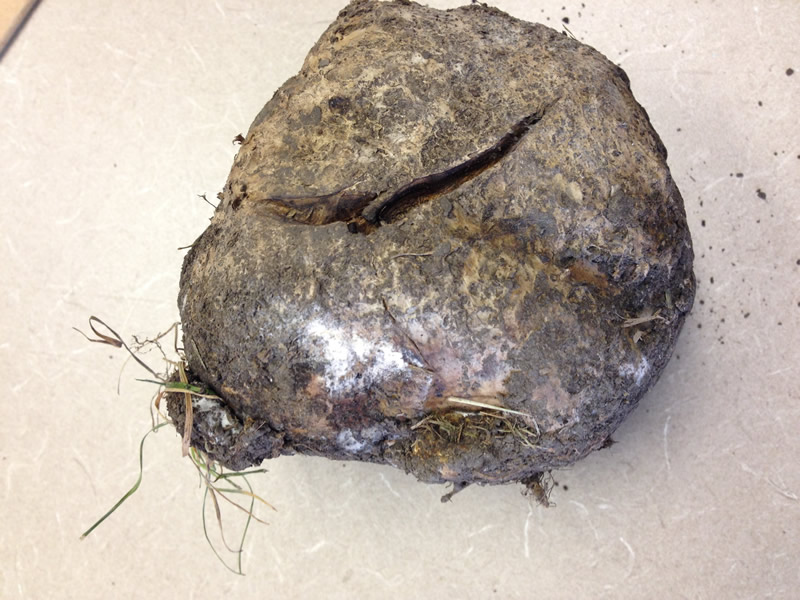Issue 17, October 22, 2018
Puffballs
Last week a client brought in a large white fungal orb that she had dug out of her grandson’s lawn. It was dense, as big as a grapefruit, covered in soil, and was part of a colony. It was the type of fungi that mushroom hunters rejoice over finding, but this woman and her grandson considered it troublesome as it made mowing difficult. There are many varieties of what was eventually identified as a puffball mushroom. Some are smaller and some larger, some pure white and some dirty brown. Puffballs are beneficial because they help to decompose wood, stumps, excess thatch (dead grass), dead tree roots, and other excess organic matter buried underground. They are doing what mushrooms do, decompose organic matter. Most of these fungi feed on this organic matter, breaking it down and recycling nutrients for other plants. Although these organisms cause much concern, they do not take nutrients from the plant material but make them more available to plants.
Puffballs appear when the temperatures and moisture are just right. Recent rains have spurred their growth. The large white fungal orb is known as a fruiting body as opposed to the mycelium. The mycelium is the vegetative part of the fungus consisting of white filaments known as hyphae that may remind a gardener of roots. When they are considered ripe (right temperatures and moisture), they burst open and release microscopic spores that are spread by water, wind, and tools.
- Dig up fruiting bodies when they are young and firm.
- Fertilize the lawn in areas that are prone to puffballs to encourage turf growth. Use water-soluble fertilizers at the rate of no more than one pound actual nitrogen per 1000 square feet in the early fall (September), and late spring (May).
- Remove roots, large pieces of organic debris.
- They will disappear naturally once the organic matter is all used up. These fungi can survive in your yard for several years, just waiting for the right time to regrow and create more spores.
- Removing the mushroom does little more than improving the appearance of the lawn as the mycelium is left behind.
- If excessive (more than ½“) thatch is present, dethatch in the early autumn or spring, as well as determine why the thatch accumulation is present. Aeration will control thatch and allow water to penetrate into the root zone to stimulate more grass to grow.

Puffball
Author:
Kelly Allsup